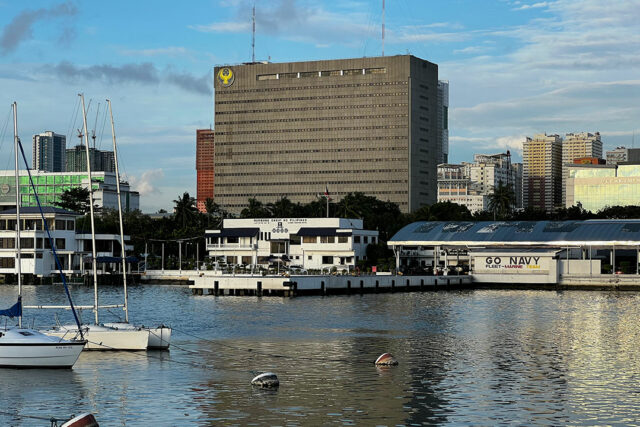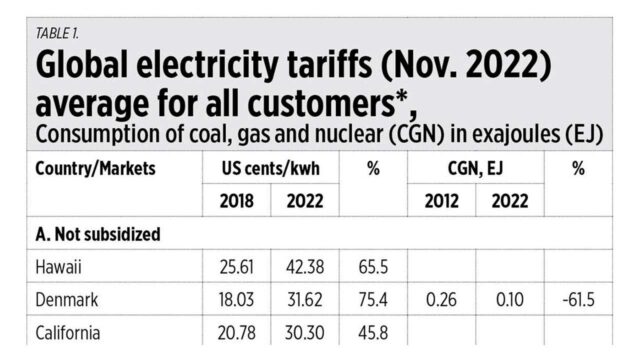A holiday homecoming at Makati Shangri-La
MAKATI Shangri-La, Manila presents a Holiday Homecoming, a celebration of festive cheer and indulgence, from Christmas-themed classes for the little ones, feasts, to a New Year Countdown. Keep the little ones entertained with Christmas-themed activities such as chocolate making and gingerbread decorating classes scheduled on Dec. 9 and 16. Rates start at P1,000 net per child per class inclusive of refreshments, a certificate of completion and a goody bag. As seating is limited, pre-registration is encouraged. Call 8813-8888 or e-mail dining.makati@shangri-la.com for reservations. The Goodie House at the hotel lobby carries festive treats including Christmas cookies and chocolates, and a selection of hampers. The hamper rate starts at P1,500 net. Then there is the Season’s Delight Afternoon Tea Set at the Lobby Lounge from 2 to 5 p.m. Enjoy the relaxing views of the lush garden and cascading waterfalls, while being serenaded by live entertainment. The rate starts at P2,500 net good for two people. The hotel’s restaurants have their specials on Dec. 24, 25, 31 and Jan. 1: fresh seafood, premium meat cuts, and a selection of sweet confections with a buffet at Circles Event Café (rate starts at P2,400 net per person); Shang Palace’s set menus for a minimum of six persons (rate starts at P3,288 net per person), Sage Grill, which has a la carte and set menu options (set menu rate starts at P4,800 net per person). Santa Claus makes a pitstop at the hotel on Christmas Eve (from 5:30 to 6:15 p.m. and 8:30 to 9:30 p.m.) and Christmas Day (from noon to 12:45 p.m. and 2:15 to 3 p.m.), handing out treats to all the good little boys and girls. The New Year’s Eve countdown at the Lobby Lounge has a 1990s theme, with roller skate dancers, drag queens, a DJ, live band music, and rhythmic drummers. The rate starts at P9,800 net per person inclusive of pre- dinner cocktails, free flowing Moet and Chandon during cocktail hour, and a three-course set menu with a dessert buffet. Holiday masses are scheduled on Christmas Eve and New Year’s Eve at 10 p.m. at the Isabela Ballroom. For more information, access the e-brochure at Holiday Homecoming (makatishangrila.com).
Young pastry chef celebrates Christmas spirit
PASTRY CHEF Allyza Cepeda, the young creative behind the champorado-inspired, soju-infused, and 1990s candies-themed macarons of Jane Dough Desserts, celebrates the season through her latest confections. Dubbed “Season’s Embrace: A Festive Symphony of Flavors,” the macaron collection features a diverse palette of flavors: sikwate, vanilla bean, orange milk chocolate, ruby strawberry, and pistachio. Ms. Cepeda, who studied at the School of Hotel, Restaurant, and Institution Management (SHRIM) of the De La Salle-College of Saint Benilde (DLS-CSB), made each macaron special. For example, Spicy Sikwate balances Auro 64 % dark chocolate with a gentle kick of cayenne, Vanilla Bean envelops the creamy rich Madagascar vanilla in a classic meringue sandwich. The macarons come in dainty boxes personalized with quaint hang tags. For more information about Ms. Cepeda’s creations visit https://www.facebook.com/findjanedough.
Feasts at Newport World Resorts
NEWPORT World Resorts’ signature and specialty restaurants offer holiday flavors from all over the world. Casa Buenas has the Fiesta de Navidad spread worth P9,500 net. The Christmas family set offers festive Filipino-Spanish fare such as smoked and roasted honey ham, grilled sea bass, black mussels, adlai and mushroom risotto, grilled asparagus with prosciutto and egg, and fruitcake with white chocolate macadamia. This feast is best shared by up to five to six persons. Meanwhile, a four-meter tall Yuletide Gingerbread House can be found at the Newport Garden Wing. Inside are shelves filled with sweet treats such as Small Chocolate Snowman (P800 net), Santa on Scooter (P1,500 net), and Chocolate Boot with Truffles (P600 net). Kusina Sea Kitchens, the all-day dining destination at Hilton Manila, welcomes the Yuletide season with a festive buffet for a classic Filipino Christmas celebration. Enjoy a special buffet made special with sweet carols from the Christmas Choir, a visit from Santa Claus with gifts, and Christmas Bon Bons at the Christmas Eve Dinner Buffet priced at P3,500++ and the Christmas Day Lunch and Dinner Buffet for P3,000++. Hotel Okura Manila’s fine dining and Michelin-recognized restaurant Yamazato has a seven-course Christmas Teppan Kaiseki, all for P10,000++ per person, which can be ordered from Dec. 24 to 25. Marriott Hotel Manila’s buffet restaurant, the Marriott Cafe, offers traditional roast carvings, fresh seafood, and more. The Festive Sunday Lunch is available on Dec. 10 and 17 for P3,800 nett per person. It will also serve a Noche Buena Buffet (P2,688 net), Christmas Day Lunch (P3,888 net), and Christmas Day Dinner (P3,700 net). Sheraton Manila’s all-day restaurant S Kitchen will have holiday favorites, from roast turkey, lechon, and more signature dishes on the Christmas Eve Dinner and the Christmas Day Lunch and Dinner Buffet, for P3,900 net. Guests can also take-home holiday staples straight from Newport World Resorts’ kitchen. The Holiday Takeaway menu includes savory and sweet yuletide showstoppers like US Butterball Turkey for P14,200 net, Suckling Pig for P11,600 net, Honey Glazed Pork Ham Boneless for P9,500 net, and more. For more information on The World of Christmas 2023 visit www.newportworldresorts.com and follow @newportworldresorts on Facebook and Instagram, and @nwresorts on Twitter.
Nutella at the Noel Bazaar
THE WORLD of Nutella will open its doors through the Food Gift Factory in Noel Bazaar (Filinvest Tent Alabang) on Dec 8-10. The Nutella stall will feature Nutella pastries and bundles. Nutella also offers limited edition jars that are available in two sizes — 350 gms and 680 gms. They are also available in supermarkets and hypermarkets nationwide.
DQ features M&Ms in new treats
THIS HOLIDAY season, Dairy Queen (DQ) features M&Ms in its latest Blizzard of the Month offer, which comes in six different items. First are three new Blizzards made with DQ’s creamy vanilla soft serve mixed with M&Ms candy pieces: the Nutty Blizzard, the Choco Fudge Blizzard, and the Caramel Brownie Blizzard, made with bite-sized brownies and caramel topping. Joining these limited-edition Blizzards is the new M&Ms Parfait, made with layers of soft serve and chocolate topping and then topped with whipped cream and M&Ms. For those who like ice cream cakes, there’s the new M&Ms Tin Cake, which comes in a reusable tin can, and the new M&Ms Blizzard Cake, a 100% ice cream cake made with DQ’s signature soft serve, cake crunch, and chocolate fudge center mixed with M&Ms, garnished with cake frosting and then topped with even more M&Ms. It is available in six-inch and eight-inch variants. All are available at DQ stores for dine-in and take out orders, and can also be ordered for delivery by calling the 8911-1111 hotline or by logging on to www.dairyqueen.com.ph.
Goldilocks announces new Christmas cake
GOLDILOCKS has developed a special Christmas cake: Merry Cherry Choco (P699). It is a moist chocolate cake with cherry and whipped cream filling, wrapped in smooth buttercream icing, topped with white chocolate ganache, and garnished with festive holiday toppers. Merry Cherry Choco is now available at all Goldilocks branches.
Moonleaf Tea Shop partners milk tea with waffle bites
MOONLEAF Tea Shop’s newest sweet treat is the Moonlight Waffle Bites which comes in five variants: Plain Waffle, Chocolate, Peanut Butter, Milky Cheese, and Wintermelon. Enjoy a milk tea and waffle combo with a P20 discount when ordering a Waffle Bite alongside a tall pearl milk tea. The promo will last until further notice. Moonlight Waffle Bites are now available in 14 branches around the country. For more information, visit Moonleaf Tea Shop’s website at www.moonleaf.ph
Red Ribbon has new Vanilla Sprinkles cake
RED RIBBON now carries the Vanilla Sprinkles Dedication Cake, The vanilla chiffon cake has vanilla icing, colorful sprinkles on top and in the filling, and space on top for a special dedication. It is available at all Red Ribbon stores, with the price starting at P500. It can also be ordered via the delivery website, the Red Ribbon app, the delivery hotline at #87777, or Grab Food and Foodpanda.
Personal Collection introduces Great Life Coffee
Personal Collection (PC) has introduced Great Life Coffee in the Philippines, with actress Marian Rivera as the brand ambassador. This new instant coffee is available in two variants: Creamy White and Creamy Brown. It comes in convenient twin sachet packaging. Great Life Coffee promises more than just energy; it offers exceptional is available at Personal Collection branches, as well as online platforms like Shopee, Lazada, and PC Starter, priced at P250 for 10 twin packs.

























